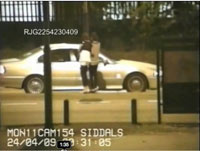
Child protection thresholds are set so high that thousands of sexually exploited children and young people miss out on help, experts say.
In the wake of the sexual abuse scandal in Derby last month, they are warning that agencies often encounter trouble when making referrals to children’s services, even where there is a serious and demonstrable risk to the child or young person.
Sheila Taylor, chair of the National Working Group (NWG) on sexually exploited children and young people, said even children as young as eight had been victims of the high thresholds. She also cited the case of a teenager who was raped repeatedly and self-harmed but who also missed the threshold.
“In these cases there are always a range of complex issues which, in isolation, may not hit child protection thresholds but, when looked at together, show a clear and serious risk,” Taylor said. “There are often loopholes which cases fall into so agencies that have identified the risk are told that cases do not meet child protection thresholds. We don’t really understand why.”
John Brown, head of strategy and development at the NSPCC, said: “We are aware of a mixed picture across the country. Not all areas have a clear set of assessment criteria but, even where it is clear, thresholds are often far too high so sexual exploitation has already taken place before a referral is successful. We need greater unformity in relation to thresholds.”
Taylor estimated that thousands of sexually exploited children were slipping through the net. In the past 12 months alone, 53 of the NWG’s 54 specialist projects received 4,206 referrals of children and young people with exploitation concerns. There are no figures collected on how many of these have resulted in child protection plans.
Part of the problem, Taylor says, is that some councils do not recognise sexual exploitation in their area and many do not have a designated lead responsible for working with third sector or private organisations to identify the risks posed to children and young people.
Wendy Shepherd, programme manager at Barnardo’s, said: “Practitioners spend their time trying to ascertain who the named designated officer is to take responsibility for sexual exploitation. Therefore, the importance of protection would appear to be downgraded as though less important than other forms of child sexual abuse.
“This resonates with how children view themselves as unimportant and unworthy. It is little wonder then that young people [don’t] come forward and trust professionals to tell them the full reality of what is happening to them,” she said.
Andy McCullough, national strategy and policy adviser, at charity Railway Children, said: “Abusers will continue to think they can get away with exploiting the most vulnerable children in our society until the culture of denial surrounding vulnerable children and the risks they faceis addressed.”
What do you think?Join the debate on CareSpace
Keep up to date with the latest developments in social care. Sign up to our daily and weekly emails
Related articles


 A trauma-informed approach to social work: practice tips
A trauma-informed approach to social work: practice tips  Problem gambling: how to recognise the warning signs
Problem gambling: how to recognise the warning signs 




 Find out how to develop your emotional resilience with our free downloadable guide
Find out how to develop your emotional resilience with our free downloadable guide  Develop your social work career with Community Care’s Careers and Training Guide
Develop your social work career with Community Care’s Careers and Training Guide  ‘Dear Sajid Javid: please end the inappropriate detention of autistic people and those with learning disabilities’
‘Dear Sajid Javid: please end the inappropriate detention of autistic people and those with learning disabilities’ Ofsted calls for power to scrutinise children’s home groups
Ofsted calls for power to scrutinise children’s home groups Seven in eight commissioners paying below ‘minimum rate for home care’
Seven in eight commissioners paying below ‘minimum rate for home care’
 Facebook
Facebook X
X LinkedIn
LinkedIn Instagram
Instagram
Comments are closed.